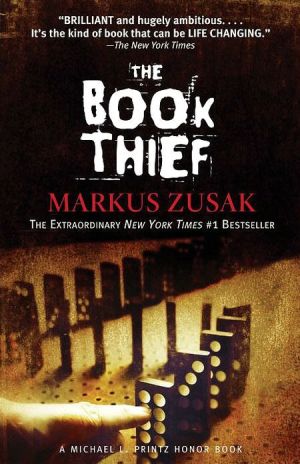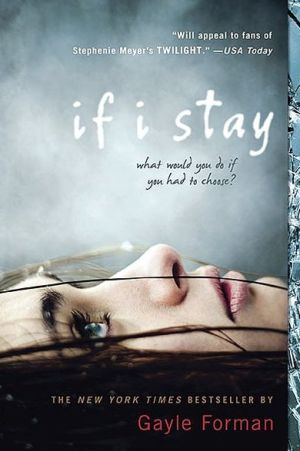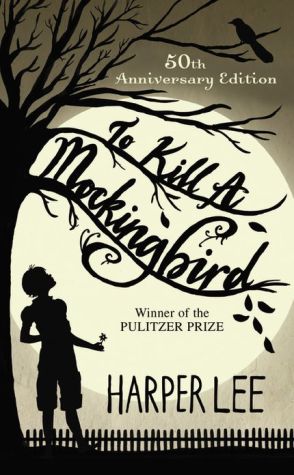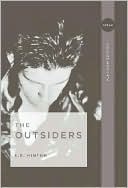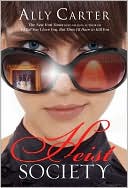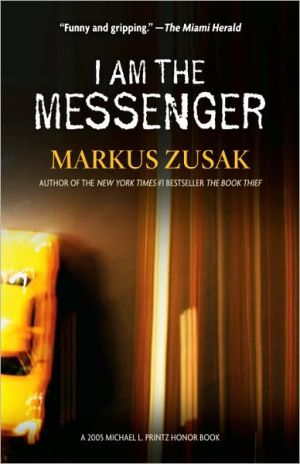Breaking Through
At the age of fourteen, Francisco Jiménez, together with his older brother Roberto and his mother, are caught by la migra. Forced to leave their home, the entire family travels all night for twenty hours by bus, arriving at the U.S. and Mexican border in Nogales, Arizona. In the months and years that follow, Francisco, his mother and father, and his seven brothers and sister not only struggle to keep their family together, but also face crushing poverty, long hours of labor, and blatant...
Search in google:
At the age of fourteen, Francisco Jiménez, together with his older brother Roberto and his mother, are caught by la migra. Forced to leave their home, the entire family travels all night for twenty hours by bus, arriving at the U.S. and Mexican border in Nogales, Arizona. In the months and years that follow, Francisco, his mother and father, and his seven brothers and sister not only struggle to keep their family together, but also face crushing poverty, long hours of labor, and blatant prejudice. How they sustain their hope, their goodheartedness, and tenacity is revealed in this moving sequel to The Circuit. Without bitterness or sentimentality, Francisco Jiménez finishes telling the story of his youth. Publishers WeeklyFrancisco Jiminez continues the moving tale of his early youth begun with a dozen autobiographical short stories in The Circuit. Breaking Through chronicles the author's teenage years. At the age of 14, Francisco and his family are caught by la migra (immigration officers) and forced to leave their California home, but soon find their way back. The author explores the prejudice and challenges they face while also relaying universal adolescent experiences of school, dances and romances. (Aug.) Copyright 2001 Cahners Business Information.
Jiménez' autobiographical story The Circuit (1997) broke new ground with its drama of a Mexican American migrant child in southern California. It won many prizes and was a Booklist Editors' Choice. This moving sequel is a fictionalized memoir of Jimenez's teenage years in the late 1950s, when the family finally stayed in one place and Francisco and his brothers worked long hours before and after school to put food on the table. First they picked strawberries in the fields. Later the jobs got better: cleaning offices, washing windows and walls, waxing floors. The prose here is not as taut as in the first book, but Jimenez writes with simplicity about a harsh world seldom seen in children's books. He also writes about a scary, sad, furious, and broken father—like the father in Na's A Step from Heaven [BKL Je 1 & 15 01]. He stays true to the viewpoint of a teenager growing up poor: the yearning (What would it be like to live in a house, rather than the crowded barracks?); the ignorance (College?); the hurt of prejudice. Yet he celebrates his Mexican roots even as he learns to be an American. The images are powerful, especially the one of the boy cleaning offices before dawn, with notes of English words to memorize in his shirt pocket. An excellent choice for ESL classes, this is a book for many readers, who may discover an America they didn't know was here.
Forced Out1Home Alone19Stepping Out29Together Again42Back to the Fields48Saint Christopher Medal56Summer Skirmishes61Becoming a Saint70If the Shoe Fits80A Promotion83A Typing Machine91Making Connections94Broken Heart103Behind the Wheel109Turning a Page113Los Santitos117Choosing Sides122Junior Scandals127Running for Office135A New Life146A Test of Faith151A Fumble157A Breakthrough163Graduation Day175Still Moving185A Note from the Author194
\ Publishers WeeklyFrancisco Jiminez continues the moving tale of his early youth begun with a dozen autobiographical short stories in The Circuit. Breaking Through chronicles the author's teenage years. At the age of 14, Francisco and his family are caught by la migra (immigration officers) and forced to leave their California home, but soon find their way back. The author explores the prejudice and challenges they face while also relaying universal adolescent experiences of school, dances and romances. (Aug.) Copyright 2001 Cahners Business Information.\ \ \ \ \ Children's LiteratureBorn to poor Mexican parents, Francisco and his family migrated to the United States in the 1950's. This is the true story of young Francisco's struggles with poverty and discrimination. To help support the family, he often misses school to work on farms picking lettuce or strawberries. As he gets older, Francisco obtains a job cleaning offices. During most of his high school years, Francisco wakes at the crack of dawn to clean a few offices. He then attends a full day of classes, spends some time studying in the library after school, then heads directly to another cleaning job. Francisco is determined to become a teacher even though his family is unable to provide any financial support and only limited moral encouragement. Francisco is living proof that success can be achieved when a person's motivation and drive is great enough. This book is a sequel to The Circuit. 2001, Houghton Mifflin, $15.00. Ages 12 up. Reviewer:Denise Daley\ \ \ VOYA"I lived in constant fear for ten long years, from the time I was four until I was fourteen years old." The author's fear became reality in eighth grade, when immigration officials took him from school. His family was being deported back to Mexico. In this sequel to The Circuit (Houghton Mifflin, 1999), Jimenez uses deceptively simple prose to describe the life-shaping events that occurred from the deportation through his high school years. Once he is able to return to the United States, school dances and student government responsibilities must be balanced with working to help support his family. College seemed an impossible dream to this immigrant boy from a poor family, but caring teachers and counselors helped him both to find financial resources and to overcome the reluctance of his father to send his son away to school. The book ends as his family drives him to the University of Santa Clara to start a new chapter in his life. Jimenez first experienced reading for pleasure when his sophomore English teacher introduced him to The Grapes of Wrath. He was entranced by characters whose experiences mirrored his own working in the fields of California. By sharing from his own life, he provides readers the same possibility to become involved with a book. The simple language makes this work an excellent choice for reluctant readers and ESL students who will relate to how Jimenez's deep ties to his family are stretched by living in a new culture. VOYA CODES:4Q 4P M J (Better than most, marred only by occasional lapses;Broad general YA appeal;Middle School, defined as grades 6 to 8;Junior High, defined as grades 7 to 9). 2001, Houghton Mifflin, 208p, $15. Ages 11 to 15. Reviewer:LibbyBergstrom—VOYA, December 2001 (Vol. 24, No. 5)\ \ \ \ \ School Library JournalGr 5-8-Maturity means breaking through the cocoon into freedom for Panchito, whose adolescence is described in this sequel to The Circuit: Stories from the Life of a Migrant Child (Houghton, 2001). The simplicity of life and the unending work for the whole family continues here, but is mitigated by Panchito's increased awareness and gradual loss of innocence as he learns to make his life a success. His father's bitterness, pain, and need for unquestioning obedience is matched by his mother's ability to coax agreement out of her son. The clash of cultures between teen insolence in the U.S. and Mexican respect for elders' authority is vividly portrayed, as is the injustice and casual bigotry often endured by young and old. Fortunately, the protagonist, now often known as Frankie, finds friends and employers willing to recognize his strength of character and ability. While sure to be inspiring and reassuring to readers mesmerized by the first book, this follow-up lacks the intensity and voice so memorable in that one, and is consequently less affecting. Still, Jim nez ably helps readers see the world of 1950s and 1960s California through adolescent eyes. Rock 'n' roll, Kennedy versus Nixon, the old-boy network of service clubs, the humiliation of deportation, and the painful struggle to have the right clothes are among the pieces of that world that readers see with a startling clarity from a new perspective. The photos at the end are great additions.-Carol A. Edwards, Sonoma County Library, Santa Rosa, CA Copyright 2001 Cahners Business Information.\ \

